- Home
- Pearl S. Buck
The Living Reed: A Novel of Korea
The Living Reed: A Novel of Korea Read online
The Living Reed
A Novel of Korea
Pearl S. Buck
Contents
Historical Note
Part I
Part II
Part III
Epilogue
A Biography of Pearl S. Buck
Historical Note
KOREA IS A GEM of a country inhabited by a noble people. Yet she is the Asian country least known to the western peoples, although to the three nations surrounding her, China, Russia and Japan, she has been well known for centuries and highly valued, and recent history has been only a continuation of that profound interest. When Stalin insisted that Russia have a share in the Pacific area of the second world war, he was fulfilling an age-old ambition of his land-locked people to secure not only the natural treasures of Korea but her matchless seacoast with harbors facing three sides of the compass. Had the Americans been sufficiently informed through history, we would have relentlessly opposed Stalin’s demands. Instead we yielded, even to the extent of dividing Korea at the 38th parallel, a line of division which, ominously enough, Russia and Japan had once agreed upon in secret in the years when they were rivals for the possession of Korea. They were prevented from making the division only by certain western powers, who had hopes of their own regarding Korea.
China, of course, had long insisted that Korea must remain independent, a buffer state between herself, Russia and Japan. During the hundreds of years when China was the greatest power in Asia, and perhaps in the world, she was able to guarantee Korea’s independence and in return Korea paid tribute to the Chinese imperial government, acknowledging the bond of suzerainty. The Chinese, nevertheless, were meticulous in maintaining the sovereignty of Korea. No Chinese were allowed to live in Korea or own land there, upon pain of death. It was only when China became weak as an old dynasty neared its end in the age of western colonialism in Asia, and with it came the rise of an ambitious modern Japan and a restless Russia, that China was no longer able to protect Korea and defend her from oppression.
Yet Korea, through no fault of her own a land of turmoil for centuries, was founded by a people in search of peace. Four thousand years ago many different tribes lived in Central Asia, that source of human life. In their nomad life these tribes wandered in different directions, the Han, or Chinese, southward to establish the country later called China, after their first emperor. Among those who went northward were the Tungu tribes, and one of these was the Puyo tribe, who settled in the region now known as Manchuria. There they became an agricultural community and there they might have remained except that to the west lived a fierce nomadic tribe, the Hiong-Nou, or Huns, the ancestors of the Mongols, and to the east the Mat-hat tribe, the ancestors of the Nuchen or Manchurians. Between these two barbarian peoples the more cultivated Puyo tribe found themselves oppressed, and soon they were forced southward into the peninsula now known as Korea. It was an ideal place for them, surrounded on three sides by the sea, and protected on the north by mountains, and here they developed a remarkable culture, rich in arts and crafts.
Legend says the origin of the Puyo was Heaven itself. A son of the Lord of Heaven was sent down to Earth, through miraculous birth from a union between bear and tiger, whose duty was to save human beings from chaos and destruction. With the help of his Heavenly Father, this Son of God ruled kindly and justly, serving always as a mediator between the Lord and human creatures. After his departure from Earth, he was followed by Tangun, the founder of the Korean nation, which was named Chosun, or Land of the Morning Calm. The name Tangun comes from the word tangul, or medicine man, and indicates a theocratic state. Korea was actually founded in the year 2333 B.C., and this is a date accepted by archeologists and historians, in spite of some lack of evidence, except that in ancient Chinese records, twenty or thirty centuries before Christ, the name of Chosun appears.
The people of that early Korea were not to find peace, however. In north China six powerful groups were fighting for control of that country. The Yen group attacked Chosun, whose power at that time reached far into north China. While fighting continued, the Ch’in group succeeded in conquering all others, in 221 B.C., and the country was unified although fighting still continued. The new rulers were oppressive, and many Chinese retreated into the peninsula of Korea. Struggle went on even into the Han dynasty, which followed the Ch’in, and then the strong resistance of the Koreans drove the Chinese away.
The history of Korea is too complex to follow here in detail, but the three kingdoms into which the country was then divided, Koguryo, Paekche and Silla, resolved their quarrels with one another and with the Chinese, ending significantly in pressure from Silla and Koguryo which forced Paekche, in the south, to a military alliance with nearby Japan, thus early dividing the peninsula between Chinese and Japanese influence. Silla conquered Paekche, however, with the help of Chinese in the Tang dynasty, and then, eight years later, conquered Koguryo also. Thus in A.D. 668 Korea was unified, after three thousand years, and Koreans began to develop their own unique culture.
For two hundred and thirty years Korea enjoyed peace, and grew prosperous. Her arts developed indigenously and through her friendly relations with the glorious age of the T’ang dynasty in China. Like all successful dynasties, however, Silla too at last grew decadent. The ruling class began to neglect the welfare of the people, and the very brilliance of their cultural achievements emphasized the misery of the less fortunate. Revolt grew into revolution under the leadership of a great man, Wang Geun, especially in the north, where the influence of the Silla government was less strong, and the dissatisfied people from Silla joined them and thus was founded the dynasty of Koryo. This ruling group in the north did not, however, attack Silla, but waited in patience for decadence to bring submission. In A.D. 935 the King of Silla peacefully surrendered to the new dynasty. From its name is taken that of Korea.
Koryo began with many reforms. The civil service was revived and improved; land was nationalized and each farmer was given a piece of land for his lifetime; social securities were set up and universal education provided for. Movable metal type provided for the printing of many books and as early as 1230, thus preceding by some 220 years Gutenberg’s lead-cast printing type in Germany in 1450. In the next dynasty, the Yi printing types were made of copper and these Korean copper types and the production of them were introduced into China.
Another great cultural achievement of the Koryo dynasty was the collecting, engraving and publishing of the Buddhist sutra, the Tripitaka. The invasion of the Mongols in the thirteenth century had so alarmed the Buddhists that a group of devotees believed it essential, as an act of protection against the invaders, to collect and preserve the best of the texts. During sixteen years the work went on, resulting in 320,000 pages of such scriptures. This monumental work, Taijang-Kyung, is now preserved in eternity in the Hal-in-sa Temple, Mount Kaya, in the province of Kyong-sang, Korea.
In spite of a long period of peace and many reforms, the dynasty of Koryo in its increasing decadence again brought trouble to Korea. To the rising discontent of the people were added attacks from Mongols and raids from Japanese pirates and buccaneers. A revolution in Japan had overthrown the power of the samurai and cost them their jobs. At the same time a major economic depression fell upon the Japanese people. Many turned into robbers by land and sea and these made constant raids on Korean ports and ships. Added to such disorder was the monstrous growing power of the Buddhist priesthood in Korea, which encroached upon the rights of the state and took over such political power that each king was compelled to become a monk before he could reign and at least one member of every family had to be a priest. The last of the Koryo kings, under the influence of a
corrupt monk, was persuaded to attack China, then under the powerful Ming dynasty. General Yi, commanded to lead the attack, rebelled and with a sympathetic people behind him, he overthrew the King and established the new dynasty of Yi.
It is interesting, in view of recent events, to note that it has been a tradition in Korea for the military to take rule by a coup whenever the existing government becomes corrupt and inefficient. Traditionally, too, the military force returns the government to civilians when essential reforms have been made. The yangban, or upper ruling class of Korea, is divided into two groups, the tangban, or civilian, and the soban, or military. Government belongs properly to the tangban, but should they fail, the soban takes over and restores the government and then returns it to the tangban.
The Yi dynasty, the last royal Korean ruling house (that is, the last “truebone” family, to employ a term which is in standard usage in Korea and which I have used in my novel in this literal translation), came to power with many great reforms, the most notable perhaps being the creation of an alphabet, under the decree and guidance of the great King Sejong. The new dynasty had been founded upon the principles of Confucianism and the improvement in the life of the common people was immediate and far-reaching. Any citizen could petition the King, and many reforms were made as the result of this communication. King Sejong, however, felt that the written language, based on the Chinese, was too cumbersome for easy communication with his people. With the help of a group of his finest scholars an alphabet was devised, the hangul. It is considered today the best and the simplest in the world. As King Sejong invented it, this alphabet had fourteen consonants and eleven vowels. It remains the same today except that one vowel has been deleted. These twenty-four letters allow for combinations which express every possible sound of the human voice in a remarkably accurate way, for King Sejong and his scholars studied the principles of phonetics, using the literature of many foreign countries as well as that of Korea.
Again, however, Korea was not to live in peace. While she prospered in all ways, including the arts, Japan was growing into a strong military power, under an ignorant but able man, Hideyoshi Toyotomi. He was the son of a peasant, ill-educated, boastful and ambitious, but able to unite contending war lords and rebels under his leadership. The Koreans had driven the Japanese pirates from their shores, and these pirates then attacked Chinese ports with such success that the Japanese conceived the idea of making Korea a stepping-stone to mainland China.
With this dream Hideyoshi went to the Emperor of Japan, and as a reward asked only that when he had conquered it, the vast and ancient land of China be given him to rule as Viceroy. The imperial permission was granted and in 1592 he set out for Korea with a fleet of wooden warships. He landed in the south with 200,000 men and marched north. The Koreans were not prepared but they fought bravely on land. Meanwhile a Korean admiral, Yi Sun-shin, devised an iron-clad warship shaped like a turtle, with openings through the iron for the firing of blazing arrows. They were called turtle-boats and they were the first iron warships in history. With a fleet of turtle-boats, Admiral Yi destroyed the Japanese wooden ships in the Korean Straits and isolated the Japanese troops. Unfortunately the Admiral was mortally wounded, but his death was kept a secret until the worst of the war was over. At the end of seven years the Japanese were vanquished and so diminished in power that, although they never forgot their dreams of the conquest of China, it was centuries before they could invade Korea again with the same purpose.
The dynasty of Yi was brilliant and long. Opening with the end of the fourteenth century, it has been called the modern age of Korea, continuing as it does into the present. King Sejong, the fourth monarch of this dynasty, was not equaled, however, in all its history. He was a Korean Leonardo da Vinci in the variety and magnitude of his gifts. The Koreans have always been and still are a people of superb creative talents, but King Sejong, in the thirty years of his rule, became a deathless legend. The level of Korean culture under his rule reached extraordinary heights, great progress being made even in science, and especially in mathematics and astronomy. One invention, for example, was a water clock which showed automatically the time of day, the change of season, the hours of the rising and setting of sun and moon. Another invention was an accurate rain gauge for use in every part of the kingdom to serve as the basis for crop forecasts. Perhaps most important of all was the accumulation and codification of medical knowledge into an encyclopedia, Vibang Yujip, a work of three hundred and sixty-five volumes, finished in 1445. The Chinese have recently used this encyclopedia to recover some of their own sources of medical information lost in the war with Japan.
King Sejong also modernized Korean music and theory with the help of the famous musical theoretician, Pak Yon. Any visitor to Korea today realizes how extraordinarily talented the people there are in all the arts but especially in music. Perhaps the emphasis which Confucius placed upon the disciplines of music in the formation of moral character influenced King Sejong to provide for the publication of many books of music and for the arrangement of court music into beautiful compositions with divine themes.
Yet King Sejong did not suppress Buddhism. In his liberal spirit and under his personal approval, Buddhist scholars revised the Buddhist works of the previous dynasty and translated them into hangul and thus made them comprehensible to the people. As the centuries passed, the Yi dynasty grew in glory and achievement. The creative spirit of the people expressed itself in a vital literature. In this dynasty, too, the first western invasions took place. Catholicism entered in the seventeenth century, and French priests were murdered on Korean soil, as were shipwrecked sailors from foreign countries. Korea had had enough of invaders, and she asked only to be left a hermit nation, growing within her own skill. It was a wish that could not be fulfilled. Western expansionism was forcing the old nations of Asia into chaos. Portugal and Spain were engaging in active trade with Japan, and the crews of their ships, wrecked by typhoons in the Yellow Sea, often found refuge in islands off the southern coast of Korea.
Russia, too, was expanding. In the middle of the seventeenth century, a Russian regiment forced its way along the Amur River and fought the Chinese in Manchuria, near Korea. And Korean records tell us that in 1653 thirty-six “men of strange appearance,” unknown before, with “blue eyes and yellow hair and high noses,” staggered ashore from their wrecked ship. They were Dutchmen, and they were taken to Seoul, the capital of Korea, where they joined the army, married and lived for the rest of their lives, although in 1666 eight of them went back to Holland, and one of them, Hendrik Hamel, wrote of his life in Korea and so provided the first book about Korea in a western language.
In 1860 China went to war with Great Britain and France to protect her own sovereignty and her rights, with the result that Russia acted as mediator, and with the peace demanded a reward and was given the Maritime Provinces. This meant that at the northeastern tip of her peninsula Korean soil touched Russian soil—a significant portent for the future. In 1866 an American ship, the General Sherman, sailed up the Taedong River and relationships began between Korea and the United States, not always wise, not always peaceful, but established in 1883 by a treaty of amity and commerce.
It is shortly before that fateful year that my novel, The Living Reed, begins. The reader may well ask, as the story unfolds, how much of it is fact and how much is fiction. The basic Korean family is true in the sense of factual material passed through the creative process of a writer’s brain. The historical material, however, is all factual, including the trial of the conspirators, the fire in the Christian church, and other such incidents—even, I add in sorrow, the events of the day the Americans landed at Inchon after the second world war. All American and other diplomatic persons, including Koreans, are factually presented. The political events are taken from history. The character of Woodrow Wilson is based on fact well documented, and whatever he says in the novel he said first in life. The way his words gripped the imaginations of the people of Asia is a
uthentic, and a Korean delegation did call on him in Paris as did emissaries of other small nations. But I have allowed my imagination, dwelling in Korea, to develop my Korean characters as I have known them on their own soil and as I saw them in the years when I lived in China and knew them there. To the Koreans, wherever we meet them in my book, I have tried to be true.
PEARL S. BUCK
March, 1963
Part I
I
THE YEAR WAS 4214 after Tangun of Korea, and 1881 after Jesus of Judea. It was spring in the capital city of Seoul, a good season for a child to be born, and a fair day. Il-han, surnamed Kim, of the clan of Andong, sat in his library waiting for the birth of his second child to be announced. It was a pleasant room, larger than most rooms, and since the house faced south, the sun climbing over the walls of the compound shone dimly through the rice-papered lattices of the sliding walls. He sat on satin-covered floor cushions beside a low desk, but the floor itself was warmed by smoke ducts from the kitchen stove, after the ancient ondul fashion. He tried diligently to keep his mind on his book, open before him on the low desk. Three hours had passed since his wife had retired to her bedroom, accompanied by her sister, the midwife and women servants. Three times one or the other of them had come to tell him that all went well, that his wife sent him greetings and begged him to take nourishment, for the birth was still far off.
“Far off?” he had demanded. “How far off?”
Each time the answer had been a shake of the head, a vague smile, a retreat, behavior typical of women, he thought somewhat scornfully, at least of Korean women, silken sweet on the surface, but rock stubborn underneath. All except his beautiful and beloved wife, his Sunia! He would have been ashamed to show to anyone, even to her, how much he loved her, and this although he had never seen her before their wedding. For once matchmakers had not lied and fortunetellers had been correct in the forecasting of signs and dates. Sunia had fulfilled every duty as a bride. She had not smiled once throughout the long day of the wedding, in spite of the ruthless teasing of relatives and friends. A bride who could not control her laughter on her wedding day, it was said, would give birth only to girls. Sunia had given birth to a son, now three years old, and if the fortuneteller was right again, today she would have another. Il-han’s home, his family, made a center of peace in these troubled times of his country. But when had times not been troubled for Korea? In four thousand years there had been scarcely a century of peace for the small valuable peninsula hanging like a golden fruit before the longing eyes of the surrounding nations, proud China demanding tribute, vast Russia hungry for the seacoast she did not have, and Japan, ambitious for empire.

 Come, My Beloved
Come, My Beloved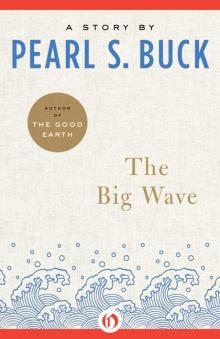 The Big Wave
The Big Wave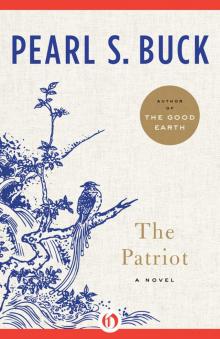 The Patriot
The Patriot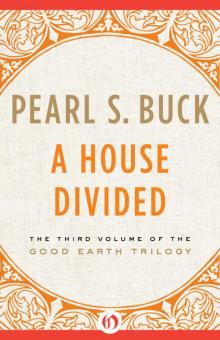 House Divided
House Divided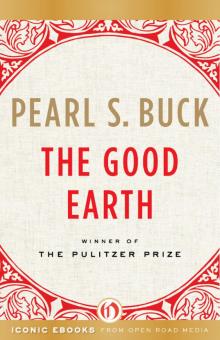 The Good Earth
The Good Earth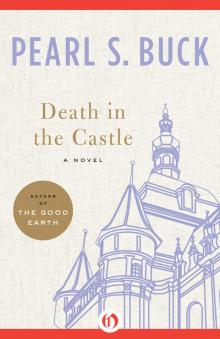 Death in the Castle
Death in the Castle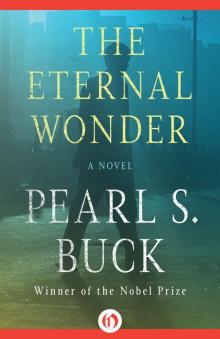 The Eternal Wonder
The Eternal Wonder Dragon Seed: The Story of China at War
Dragon Seed: The Story of China at War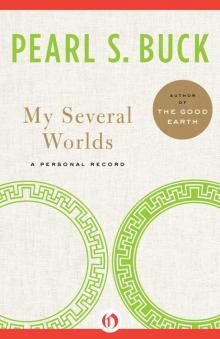 My Several Worlds: A Personal Record
My Several Worlds: A Personal Record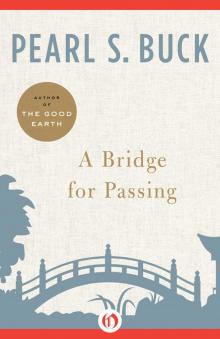 A Bridge for Passing: A Meditation on Love, Loss, and Faith
A Bridge for Passing: A Meditation on Love, Loss, and Faith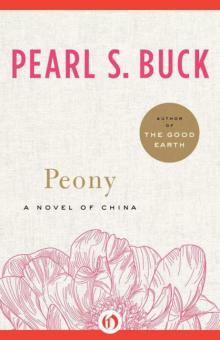 Peony
Peony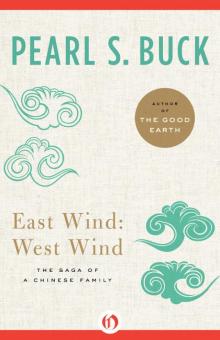 East Wind: West Wind: The Saga of a Chinese Family
East Wind: West Wind: The Saga of a Chinese Family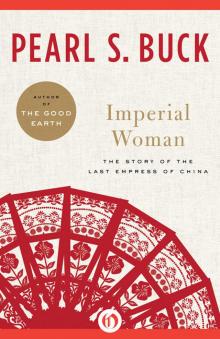 Imperial Woman
Imperial Woman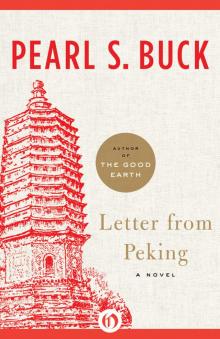 Letters From Peking
Letters From Peking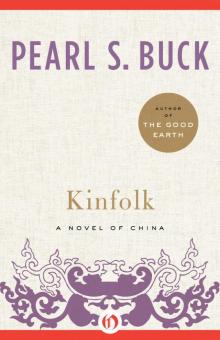 Kinfolk
Kinfolk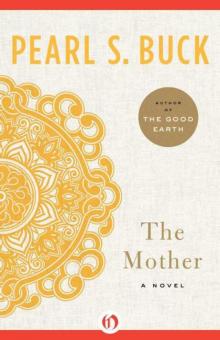 The Mother
The Mother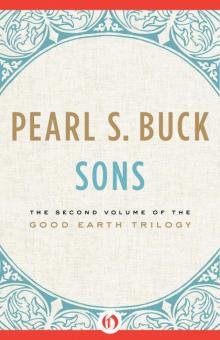 Sons
Sons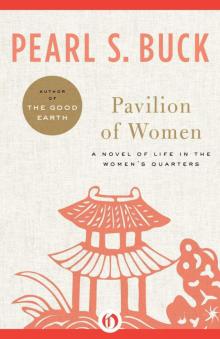 Pavilion of Women
Pavilion of Women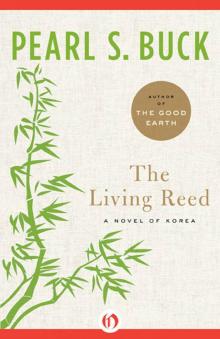 The Living Reed: A Novel of Korea
The Living Reed: A Novel of Korea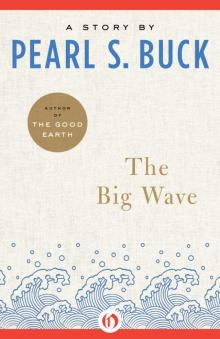 The Big Wave: A Novel
The Big Wave: A Novel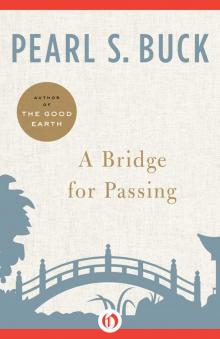 Bridge for Passing
Bridge for Passing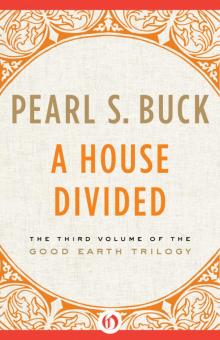 A House Divided
A House Divided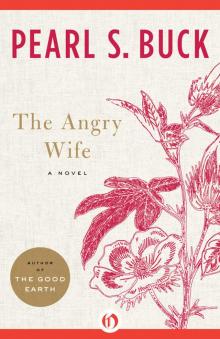 Angry Wife
Angry Wife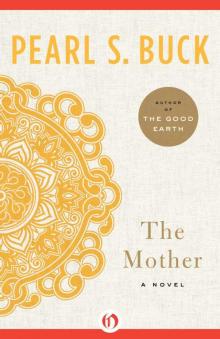 The Mother: A Novel
The Mother: A Novel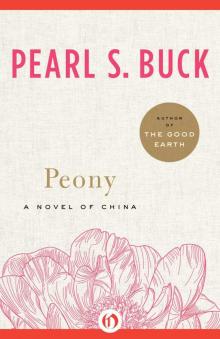 Peony: A Novel of China
Peony: A Novel of China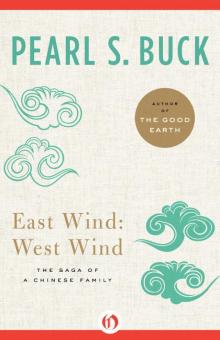 East Wind: West Wind
East Wind: West Wind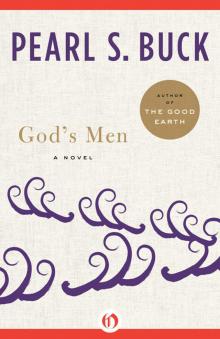 Gods Men
Gods Men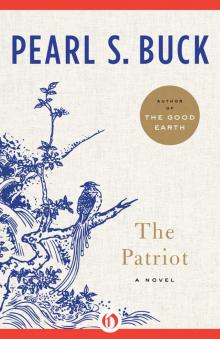 Patriot
Patriot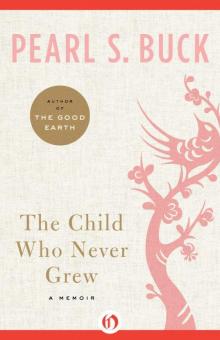 The Child Who Never Grew (nonfiction)
The Child Who Never Grew (nonfiction)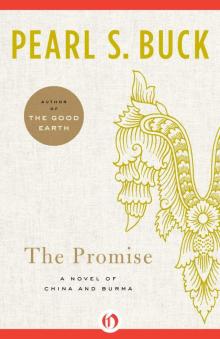 The Promise: A Novel of China and Burma (Oriental Novels of Pearl S. Buck)
The Promise: A Novel of China and Burma (Oriental Novels of Pearl S. Buck)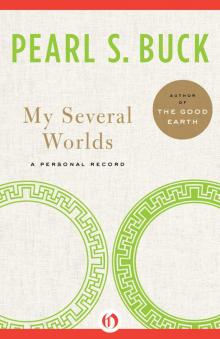 My Several Worlds
My Several Worlds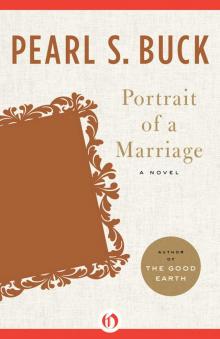 Portrait of a Marriage
Portrait of a Marriage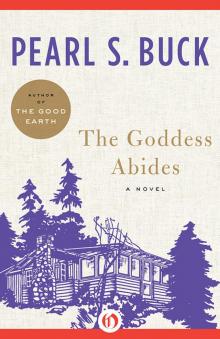 The Goddess Abides: A Novel
The Goddess Abides: A Novel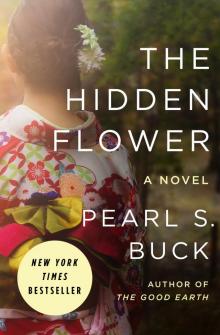 Hidden Flower
Hidden Flower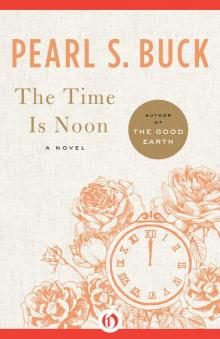 Time Is Noon
Time Is Noon